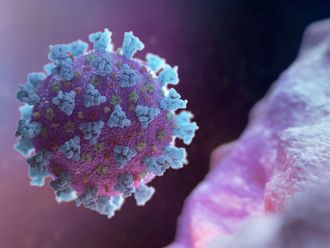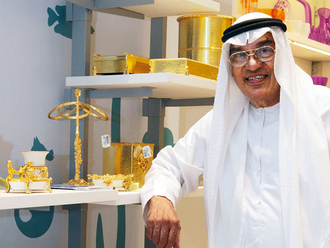
If men had read Volume 17, Issue 2, of that venerable scientific journal Ethology and Sociobiology, they would have been a lot less busy.
In 1996, when Frank Muscarella and Michael Cunningham published The Evolutionary Significance and Social Perception of Male Pattern Baldness and Facial Hair, they dispelled centuries of doubt and despair, but no one noticed.
Participants viewed six male models with different levels of facial and cranial hair and rated each on 32 adjectives related to social perceptions. The results showed that bald men were associated with more maturity than those with a full head of hair. The two scientists said baldness indicated a male with enhanced abilities to secure reproductive partners and raise offspring to adulthood.
Since scientific journals are confined to the erudite and commoners continue to ignore maturity’s many merits, the battle against baldness wages on. From shampoos to surgery, there is a plethora of solutions and bald men are bold enough to try the trivial and the turgid.
Traditional formulae
Lore and legend take the lead. Neel Roy has a bald father and three bald brothers, the only reason why he started applying tobacco paste to his head at the age of 16. Now aged 41, the Indian is glad he has hair at all. “I get dried tobacco from Kolkata, grind it and apply it to my scalp thrice every week. These are the results,” he says, showing off his thinning, but fierce black and mildly pongy head of hair.
Traditional cures are often associated with malodorous poultices. Garlic is ground and massaged into the scalp to treat thinning hair and hair loss, as are ground fenugreek seeds. India’s most successful Ayurvedic haircare products use such natural ingredients such as mahabhringraj (false daisy) and amla (Indian gooseberry).
Practitioners of Arabic Unani medicine believe toasted black cumin seeped in olive oil can cause hair growth, and American Indians swear the extract saw palmetto can treat baldness. A 2012 study by South Korean scientists say Grateloupia Elliptica, a red seaweed indigenous to Jeju Island, has the potential to treat baldness, hair thinning and hair loss.
But trial and error by natural cure is hardly new. The Ebers Papyrus of 1500 BC lists a remedy for hair growth involving ‘toes of a dog, refuse of dates and the hoof of an ass’, but does not record results. Christopher Hibbert, in Queen Victoria: A Personal History, writes of quinine and orange jelly among the cures prescribed to the young princess in her battle against baldness.
Stimulating solutions
More recent cures hold promise. Long-time Sharjah resident Bert Rogers is a devoted user of Alpecin Caffeine Shampoo, and says it has helped him stave off complete baldness.
“I used to lose large quantities of hair and had morbid thoughts of being bald,” he says. “After two years of regular use, this is only a niggling worry. I have not grown large amounts of new hair, but retained most of the hair I had, and it looks thicker and fuller.” The German product is available at Boots outlets in the UAE and is priced under Dh30.
Also widely sold in the UAE is Minoxidil, a topical solution that increases blood supply to hair follicles. It is sold under the brand names Regaine, Vanarex and Mintop. The caveat — Minoxidil does not work on everyone, and side effects include hair growth on other parts of the body.
Finasteride is sold as an oral tablet for male baldness in the UK, under the brand name Propecia, but only with a doctor’s prescription. It was effective in 80 per cent of tested men. Side-effects? Ahem, temporary impotence.
Alexandre Kotovsky, General Manager of the beauty products company Creation A.M.P. in Dubai, says their bestselling product, Shiseido Andenogen Hair Energizing Formula, is a cure for baldness, not merely a preventive measure for hair loss. “Adenosine, the main ingredient, effectively increases hair growth factors FGF7 in dermal papilla cells, thus promoting regrowing of hair. Andenogen targets baldness by increasing both hair density and thickness.”
Surgical procedures to regain lost hair are certainly a cut above shampooing the scalp with natural or chemical potions. Given the effort, time, costs and pain involved, men who head for hair transplants are a hardy lot.
Hair transplanting grafts naturally-occurring follicular units of hair onto balding areas, in very close proximity and in large numbers. In Follicular Unit Transplantation (FUT), a strip of skin containing follicular units is extracted from one area of the scalp, dissected into tiny parts and implemented into small incisions called recipient sites. In Follicular Unit Extraction (FUE), instead of an entire strip, individual follicular units are extracted directly from the donor area, one at a time.
Shoots of growth
In a comparison between the two types, Sohail Pillai visited Dubai from Singapore six months ago, to undergo one session of FUT at a private clinic in Dubai, and says he is waiting to see tangible results before he undergoes a second. “I do have some hair growing in my shiny bald patch, but there has been no change in the length of the hair,” he says.
But Dubai resident Abdul Karim Buker is so pleased with the results of a single FUE session, he is busy promoting it ardently. From being a semi-bald man, he now sports hair that almost covers his ears. “People don’t recognise me with all my new hair,” he says.
Anisa Vrabac, Operations Manager and Patient Care Coordinator for the Hair Transplant Department at Dubai Cosmetic Surgery says they handle 25 to 35 hair transplant cases
every month.
“Our surgeons specialise in Mass Direct FUE which means that in just one session, we are able to transplant 3,000+ grafts, and in most cases, this achieves complete hair restoration. The area of 3,000 grafts (about 7,500 hairs), is equal to a medium-size palm,” Vrabac explains. “FUE is a non-surgical or minimally invasive procedure. The entire process is done while the patient is fully awake and comfortable, watching movies, listening to music or taking a nap while the surgeon works on his hair.”
Hair transplant at Dubai Cosmetic Surgery starts at around Dh15,000 and can go up to Dh45,000, depending on how much hair is being transplanted.
Of mice and men
Research continues unabated. Stem cells and dermal papilla cells have been discovered in hair follicles, and may well lead to successes in treating baldness through hair multiplication (HM), also known as hair cloning. A 2004 New York study also showed that bald mice grew hair after being implanted with a type of stem cell.
These are perhaps the most promising solutions for the many men who have missed Muscarella and Cunningham’s assurance of a mature countenance. The catch is that despite vivid images of newly hirsute, and therefore happy, mice living in laboratories, they remain untested on men.
*************
Stem the problem
Stem cells and dermal papilla cells have been discovered in hair follicles, and may lead to treating baldness through hair multiplication (HM), also known as hair cloning.
A 2004 New York study showed that bald mice grew hair after being implanted with a type of stem cell.
The Tokyo University of Science has also used stem cells to regenerate hair follicles. The Tokyo team created a seed of a hair cell from a normal mouse and inserted it into the skin of a hairless mouse, and found that the hairless mouse grew some hair. The new hair connected well with the skin and nerves, and also went through the cycle of shedding and regrowing.
— I.S.












